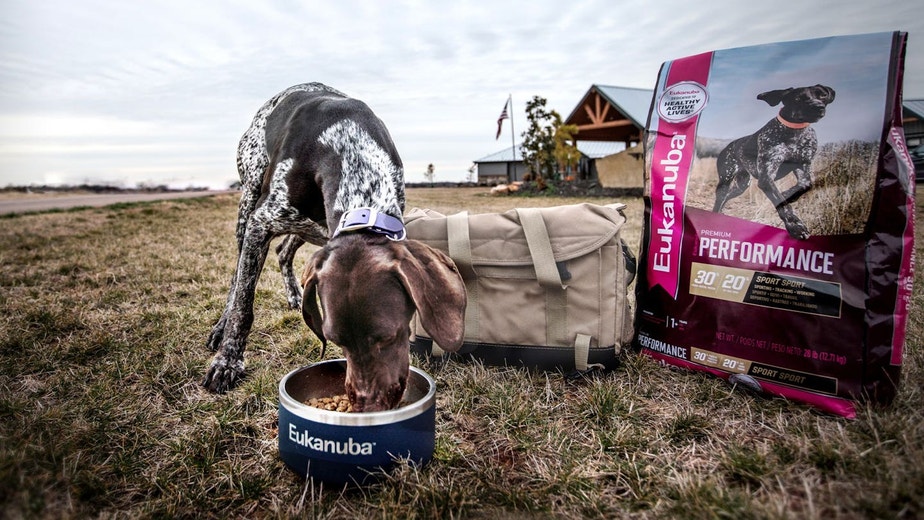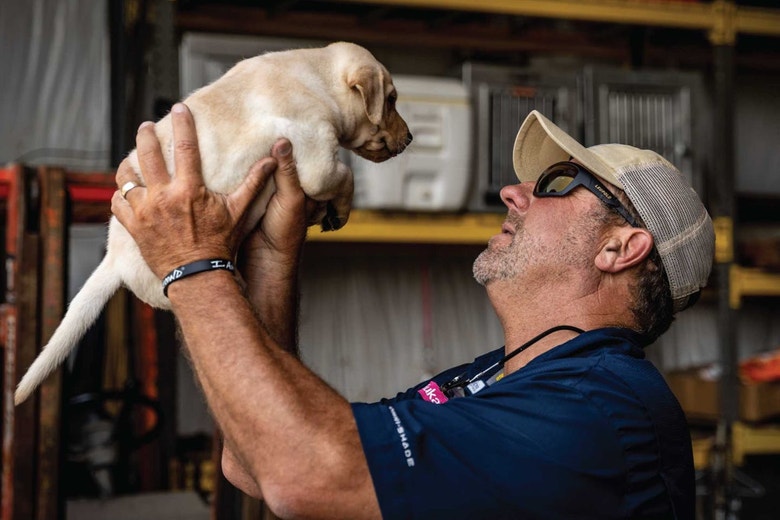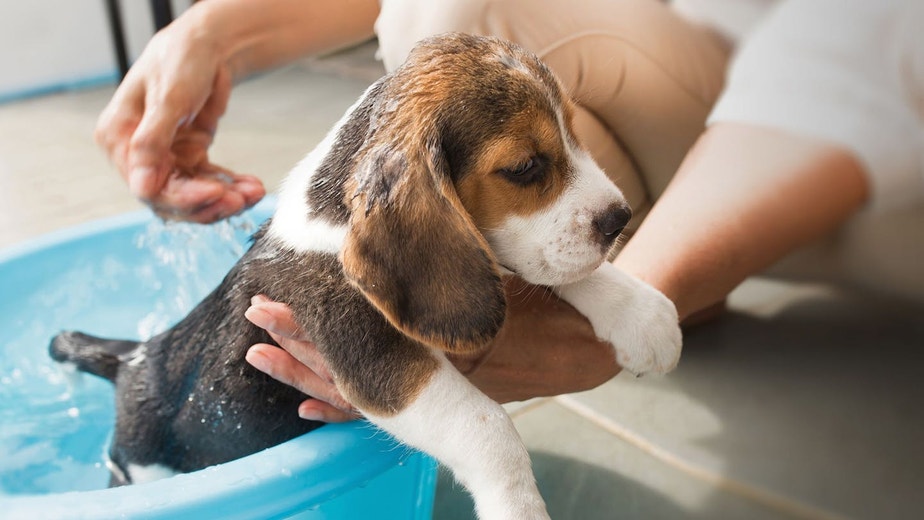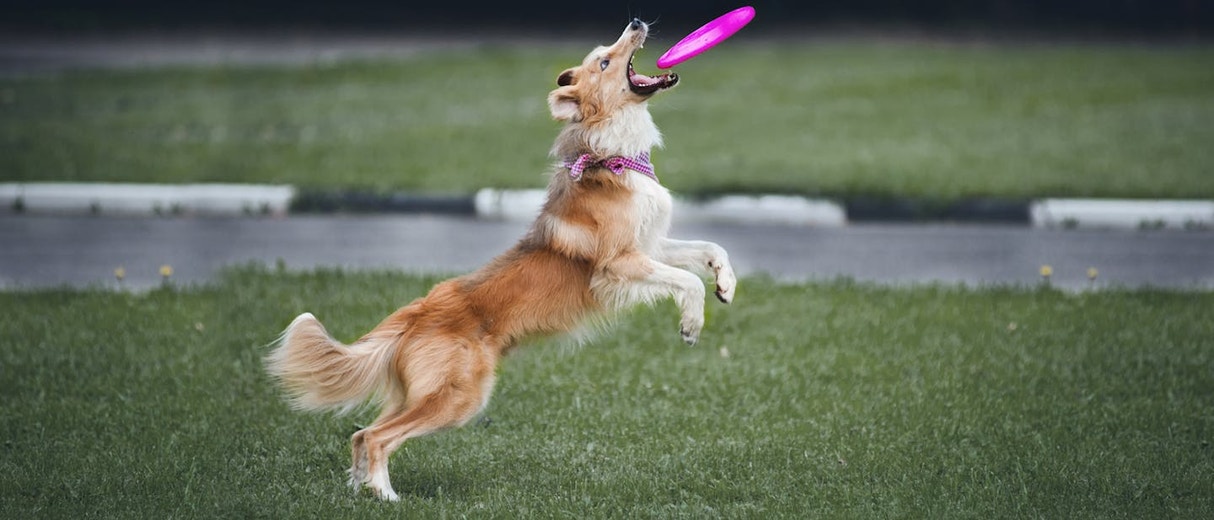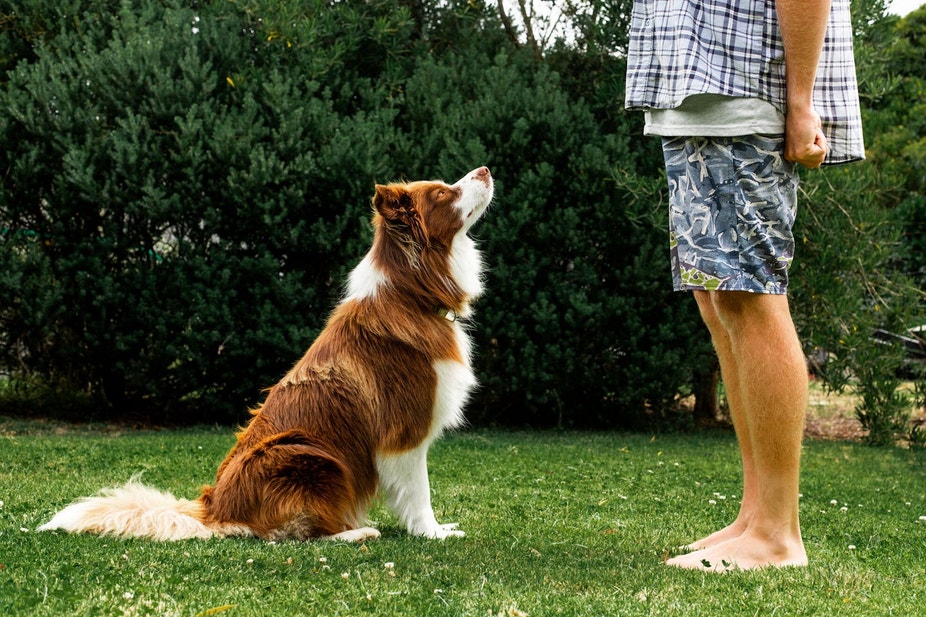
Basic obedience training for your puppy
Puppies can begin learning basic obedience techniques at the age of just eight weeks old, essentially as soon as you bring them home. It’s important that your puppy views any type of training you do as a positive experience that they look forward to each time.
Positive reinforcement is the process of rewarding a puppy once they’ve performed a desired action with something your puppy values. For example, by offering them a toy or their favourite treat when they’ve successfully recognised what’s asked of them they will begin to associate this behaviour with a reward.
But other than teaching a puppy new skills, why is obedience training important for your puppy to learn? We will explore this in more detail below.
In This Article
WHY IS OBEDIENCE TRAINING IMPORTANT?
Obedience training is an essential part of any puppy’s life. It provides both mental and physical stimulation which helps to keep your puppy feeling happy and satisfied from a job well done. Not to mention will make both of your lives MUCH easier.
Reward-based training helps to improve and strengthen the relationship between both puppy and owner. The most attractive reason for training a puppy is because of the joy and ease it brings to a household. A well-trained puppy is much more enjoyable than a puppy that isn't socialized or aware of inappropriate behaviour. Teaching a puppy to listen to you and learn basic obedience skills allows you to introduce your puppy to more environments, travel more often and leave the house without having to worry about coming home to a destroyed living room.
Another desirable factor for training a puppy is an increased level of safety. Common behavioural skills that are vital for a puppy to learn early on include leash training, teaching a puppy to come when called and proper socialisation skills that teach them how to interact with other people/dogs.
Once you’ve mastered these skills and start to introduce your puppy to new environments you’ll have a deeper understanding of them, how they act in certain situations and how to better support them in a given situation.
Obedience Training Supplies Your Puppy Needs
Before you get started on your puppy’s obedience training journey it’s important to be prepared. These five essential items will help to make your training sessions a much smoother experience, and a well-trained puppy in no time.
1. Clicker
Clicker training is a positive reinforcement based method(open in new tab) that relies on marking desirable behaviour using a ‘clicker’ and rewarding them afterwards.
2. Treats
Treats can be used as an easy luring method when teaching a puppy new behaviour
3. Leash & Harness
Leash training is one of the most effective, and useful training techniques for puppy’s to learn and can be taught as soon as they’re brought home
4. Barriers
Puppy supplies like crates, pet doors and playpens help to create a more dog-friendly household that allows your puppy to roam freely in an area of your choosing
5. Teething toys
Puppies love to bite, they will chew anything in reach. Having appropriate teething toys for your puppy will make all the difference when it comes to re-redirecting their chewing behaviour.
Popular Puppy Training Methods
There are various methods for training your puppy with new skills, obedience and tricks - it can be hard to know which one to go for.
Clicker Training
Clicker training is one of the simplest, most effective training methods for teaching a puppy. With clicker training, you simply click the clicker after your puppy successfully performs a given command or trick and reward them with positive reinforcement and or treats. Eventually, your puppy will learn that the noise of the clicker is associated with rewards and following commands, which will help to reduce the risk of unwelcome behaviour later on.
Crate Training
Crate training is a helpful training method for puppies in various situations. A crate can be a safe haven for your puppy to retreat to, a tool for teaching your puppy how to be house-trained, and a safe way to transport your puppy when you decide to hit the road.
Positive reinforcement
Positive reinforcement is the key to teaching a puppy desirable behaviours by introducing a positive stimulus after your puppy performs how you want them to. Using this behaviour reinforces the behaviour that you want to see more of and will increase the likelihood of your puppy behaving appropriately in the future.
There are many ways to encourage your puppy and show them that they’re done the right thing. We’ve listed a few:
Favourite toys
Treats
Positive tone of voice
Plenty of pats!
When Should I Start Training My Puppy?
Teaching your puppy basic obedience training can begin when they’re as early as eight weeks old - essentially as soon as you’ve brought your puppy home. It’s important to teach your puppy that you’re the leader right from the start, if you don’t you might have to break bad habits later on. It’s easier to teach puppies when they’re young and susceptible to change, the older they are the harder the habits will be to break.
Puppies have short attention spans, so training sessions should be brief but occur often. You can start to introduce basic commands which are sit, stay, down, come, heel, off, no and drop it using food rewards and positive reinforcement to encourage your puppy.
How Many Times A Day Should You Train Your Puppy?
You should strive to train your puppy for at least 15 minutes per day in short increments (5-minute sessions) spread throughout the day to ensure your puppy doesn’t lose focus.
Remember to start your puppy’s training indoors where there are fewer distractions and allow them to get used to a confined space that they can associate their training with.
What Are The 7 Basic Puppy Commands?
Although there are numerous commands a puppy can learn (all of which are important), the 7 basic commands that every puppy should know include sit, down, stay, come, off, don’t touch and heel (leash training).
It’s up to you to choose which command you’d like to teach your puppy first, although you’ll find they often work in conjunction with one another and various commands can be taught at once. This section can then provide an internal link to the article ‘The Top 10 Commands To Teach Your Puppy First’
What Are The Benefits Of Puppy Training?
Puppy training provides your puppy with basic manners and skills that allow them to behave correctly around other people - from walking nicely on a leash, to coming when called. Teaching your puppy basic obedience commands allows you to live more freely, and safely with your puppy.
There are plenty of benefits when it comes to training a puppy, we’ve listed a few.
Strengthens The Bond Between You & Your Puppy
As you spend more time with your puppy creating new experiences and teaching them new tricks the faster the bond between the two of you will grow. Puppy’s (all dogs really) love to please their owners and will strive to do their best if it means getting a positive reaction in return - which is why it's so important to encourage your puppy when they behave correctly and avoid reprimanding them when they make a mistake. This will only make them fear you and take longer to achieve your desired behaviour.
Leads To A More Sociable Puppy
An inexperienced puppy can often feel overwhelmed when they’re first introduced to new environments, new people and especially new dogs! If your puppy has not learnt to control their excitement, or been taught to understand how to socialise around other dogs it may lead to your puppy being fearful of other dogs in the future, or perhaps get too close to an unfriendly dog. Teaching your puppy the correct way to behave will educate them to interact with people and other animals correctly in future.
Improves Your Puppy’s Safety
As we mentioned before, obedience training is important for your puppy’s safety. Puppies are curious animals - they love to explore, sniff and chew on just about anything. If your puppy hasn’t learnt that you’re the one in control then they’re at risk of putting themselves in danger.
When Should You Take Your Puppy To Obedience Training Classes?
Ideally, puppy’s should attend puppy school before they’re 12 weeks old. But it’s vitally important that your puppy be vaccinated before attending class and receive a vet check 2 weeks prior to attending puppy school.
Puppy school focuses on early socialisation in a crucial impressionable stage of their life, as well as provides valuable information and resources to new puppy owners to help them identify and correct behavioural issues that may arise.
Key Takeaways For Training A Puppy
The biggest benefit of training your puppy from home is that you can control the environment and reduce the number of distractions in the room - which plays a major role in getting your puppy to cooperate. Once a puppy has understood what’s asked of them you can slowly start to introduce them to different areas of the house to practice commands and or tricks to get them used to behaving when more distractions are introduced.
We’ve put together a few key reminders when you’re training your puppy at home:
Be consistent
Training is a confusing time for your puppy, don’t add to their stress by reacting differently during their training. Instead, try to keep your reactions/methods consistent every time to help your puppy learn faster.
Be Clear
Puppies need clear direction. Creating multiple commands for one action is confusing and unnecessary. Keep commands short and to the point for example ‘sit’ is a lot easier for your puppy to understand rather than a full sentence, such as ‘sit down boy.’
Be Patient
Training takes time and effort from both puppy and owner. It can be tiring and overwhelming at times but the most important rule to remember during puppy training is to be patient. Puppy’s love to make their humans happy and will be trying their hardest to get it right, getting angry with them will only deter them from interacting/listening to you.
Be Immediate
Don’t wait too long before training your puppy, remember 8 weeks is prime time to begin your puppy’s training. The longer you wait the more time there is for bad habits to form.
Don’t Stress
This kind of falls under the ‘be patient’ bracket. Puppies are extremely intuitive and will be able to sense your energy when you’re stressed which in turn will stress them out and likely cause problems to occur during training. It’s important you remain calm, take a breath and have a break for 5 minutes if you need to gather your thoughts before trying again.
Remember, patience is the most important skill you’ll need to foster during the whole training process with your puppy. Mistakes are inevitable and frustrations will arise during certain training exercises for both you and your puppy which is why it’s extremely important that you remain calm, in control and offer plenty of support to help your puppy get through their training. In doing this you’ll be giving your puppy a healthy, active life that will make for an even happier household.

